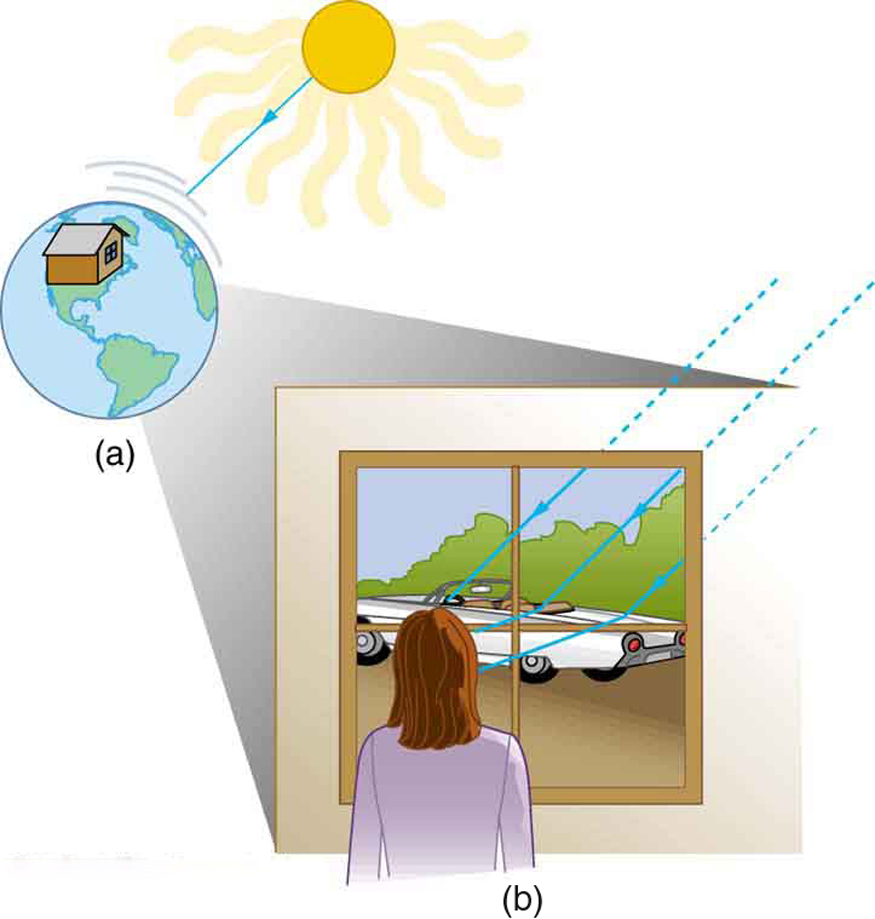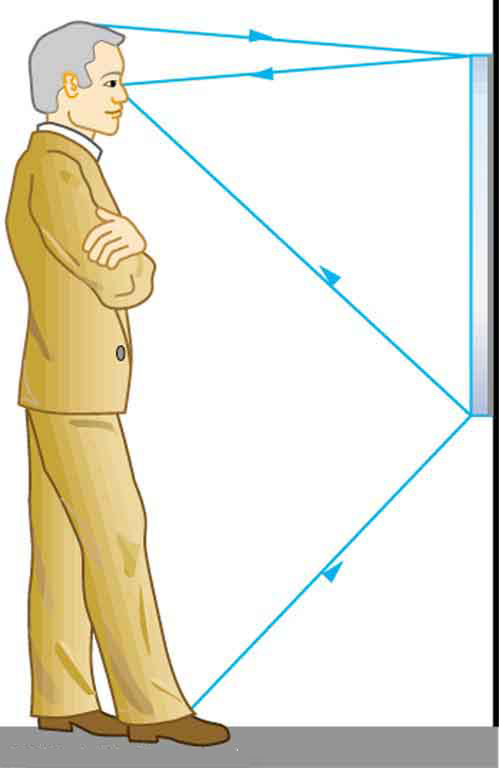| << Chapter < Page | Chapter >> Page > |
By the end of this section, you will be able to:
The information presented in this section supports the following AP® learning objectives and science practices:
There are three ways in which light can travel from a source to another location. (See [link] .) It can come directly from the source through empty space, such as from the Sun to Earth. Or light can travel through various media, such as air and glass, to the person. Light can also arrive after being reflected, such as by a mirror. In all of these cases, light is modeled as traveling in straight lines called rays. Light may change direction when it encounters objects (such as a mirror) or in passing from one material to another (such as in passing from air to glass), but it then continues in a straight line or as a ray. The word ray comes from mathematics and here means a straight line that originates at some point. It is acceptable to visualize light rays as laser rays (or even science fiction depictions of ray guns).
The word “ray” comes from mathematics and here means a straight line that originates at some point.

Experiments, as well as our own experiences, show that when light interacts with objects several times as large as its wavelength, it travels in straight lines and acts like a ray. Its wave characteristics are not pronounced in such situations. Since the wavelength of light is less than a micron (a thousandth of a millimeter), it acts like a ray in the many common situations in which it encounters objects larger than a micron. For example, when light encounters anything we can observe with unaided eyes, such as a mirror, it acts like a ray, with only subtle wave characteristics. We will concentrate on the ray characteristics in this chapter.
Since light moves in straight lines, changing directions when it interacts with materials, it is described by geometry and simple trigonometry. This part of optics, where the ray aspect of light dominates, is therefore called geometric optics . There are two laws that govern how light changes direction when it interacts with matter. These are the law of reflection, for situations in which light bounces off matter, and the law of refraction, for situations in which light passes through matter.
There are three different ways of thinking about or modeling light. Our earliest understanding of light dates back at least to the ancient Greeks, who recorded their observations of the behavior of light as a ray. These philosophers noted that reflection, refraction, and formation of images can be explained by assuming objects emit and/or reflect light rays that travel in straight lines until they encounter an object or surface.
By the end of the 17th century, scientists came to understand that light also behaves like a wave. It exhibits phenomena associated with waves, such as diffraction and interference (which we will study in later chapters). Two hundred years later, scientists studying the smallest structures in nature showed that light can also be thought of as a stream of particles we call “photons,” each carrying its own individual portion (or “quantum”) of energy.
In this chapter, we will be discussing the behavior of light as it interacts with surfaces that are much larger than the wavelength of the light. In such cases, the light is very well modeled as a ray. When light interacts with smaller surfaces or openings (with sizes comparable to or smaller than the wavelength of light), the wavelike properties of light manifest more clearly—with profoundly interesting and useful results. When light interacts with individual atoms, the particle nature of light becomes more clearly apparent. We will study those situations in later chapters.
The part of optics dealing with the ray aspect of light is called geometric optics.
When light from a distant object reflects off of a concave mirror and comes to a focus some distance in front of the mirror, we model light as a _____ to explain and predict the behavior of light and the formation of an image.
(c)
Light of wavelength 500 nm is incident on a narrow slit of width 150 nm. Which model of light most accurately predicts the behavior of the light after it passes through the slit? Explain your answer.
Suppose a man stands in front of a mirror as shown in [link] . His eyes are 1.65 m above the floor, and the top of his head is 0.13 m higher. Find the height above the floor of the top and bottom of the smallest mirror in which he can see both the top of his head and his feet. How is this distance related to the man’s height?

Top from floor, bottom from floor. Height of mirror is , or precisely one-half the height of the person.

Notification Switch
Would you like to follow the 'College physics for ap® courses' conversation and receive update notifications?